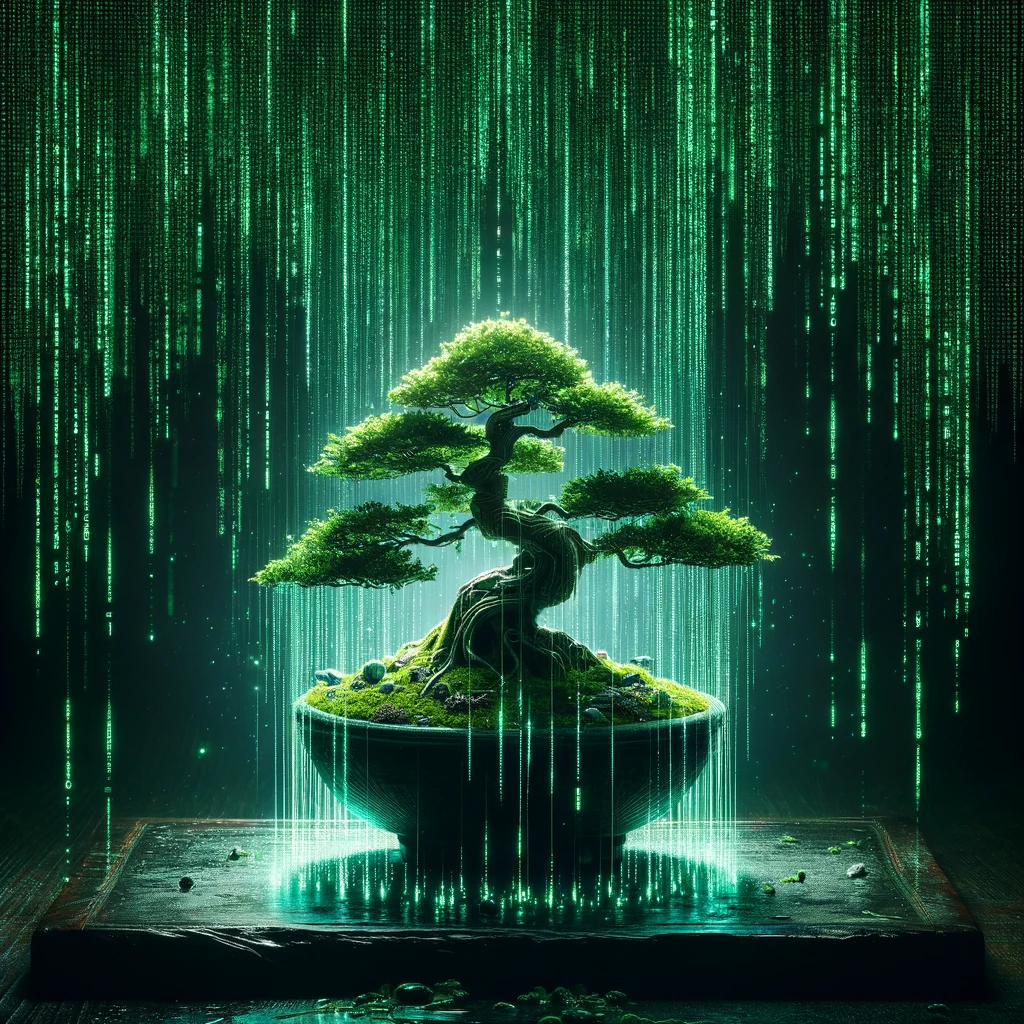Discover the Art of theDigitalMatrixrain effect with OpenAI's Neural Network
With the assistance of ChatGPT-4, I have integrated a selection of meaningful Chinese characters into the Matrix Rain, each symbolizing profound concepts and teachings from Eastern traditions. These characters include:
- Zen (禅) - Chan: The essence of meditation and introspection.
- Ikigai (生命的意义): A Japanese term represented in Chinese as 'the meaning of life.'
- Peace (和平 - Hépíng): The universal pursuit of harmony and tranquility.
- Bonsai (盆栽 - Pénzāi): The art of beautifully sculpted nature.
- Love (爱 - Ài): The timeless and universal language of the heart.
- Calm (平静 - Píngjìng): A state of inner peace and stillness.
- Water (水 - Shuǐ): The symbol of life and adaptability.
- Power (力量 - Lìliàng): The embodiment of strength and resilience.
- Knowledge (知识 - Zhīshi): The pursuit of understanding and enlightenment.
- Wisdom (智慧 - Zhìhuì): The culmination of experience and insight.
Check out 'Digital Zen Cascade' to see what ChatGPT has achieved in modern digital art. This interactive Matrix Rain effect is a testament to the latest advancements in AI and programming. Simply click on 'Digital Zen Cascade (See it in action)' to interact with the code and explore the fusion of technology and artistry brought to life by ChatGPT.
This version of the Matrix Rain is not just a visual spectacle; it's a contemplative journey, each character cascading down the screen like a thought in meditation.
Create Your Own Version
Below, you'll find a detailed tutorial on how you can create your own personalized Matrix Rain effect. Whether you want to embed your favorite words, symbols, or even a secret message, this guide will walk you through every step, demonstrating the incredible versatility and potential of ChatGPT-4 in bringing your creative visions to life.









